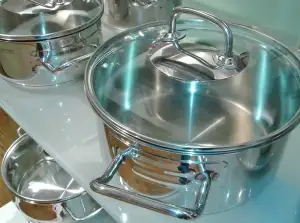Grease Stains No More: Expert Tips to Remove Grease from Clothes

- Preparing the stained garment
- Applying dish soap to the grease stain
- Gently rubbing the dish soap into the stain
- Letting the dish soap sit on the stain
- Rinsing the garment with warm water
- Checking the stain and repeating if necessary
- Laundering the garment as usual
- Air drying or tumble drying the garment
- Final tips and precautions for removing grease stains at home
Grease stains on clothes can be a frustrating and stubborn problem. Whether it's from cooking, working on your car, or enjoying a delicious meal, grease has a way of finding its way onto our favorite garments. But fear not! With the right techniques and a little bit of patience, you can easily remove grease stains from your clothes at home. In this article, we will guide you through expert tips and methods to effectively tackle those pesky grease stains. So say goodbye to unsightly marks and hello to clean, fresh clothes once again!
Preparing the stained garment
Preparing the stained garment is an important step in effectively removing grease stains. Start by blotting the stain with a clean cloth or paper towel to remove any excess grease. Avoid rubbing the stain, as this can push the grease deeper into the fabric. Next, lay the garment flat on a clean surface and sprinkle some cornstarch or baby powder onto the stain. Gently press the powder into the fabric using your fingers or a soft brush. This will help absorb any remaining grease and make it easier to remove during the cleaning process. Allow the powder to sit on the stain for at least 15 minutes before moving on to the next step.
Applying dish soap to the grease stain
To begin removing the grease stain, apply a small amount of dish soap directly onto the affected area. Make sure to use a mild dish soap that does not contain any bleach or harsh chemicals. The dish soap will help break down the grease and make it easier to remove from the fabric. Gently spread the dish soap over the entire stain, ensuring that it covers the entire greasy area. Be careful not to rub too vigorously, as this may push the grease further into the fabric fibers.
Gently rubbing the dish soap into the stain
After applying the dish soap to the grease stain, it's important to gently rub it into the fabric. Use your fingers or a soft cloth to work the soap into the stain in a circular motion. Be careful not to scrub too vigorously as this may damage delicate fabrics or spread the stain further. The goal is to ensure that the dish soap penetrates the fibers of the fabric and breaks down the grease molecules. Take your time and continue rubbing until you feel that the soap has been evenly distributed over the entire stain.
Letting the dish soap sit on the stain
Once you have applied dish soap to the grease stain and gently rubbed it in, it's important to let the dish soap sit on the stain for a while. This allows the soap to penetrate the fabric and break down the grease particles. The recommended time for letting the dish soap sit on the stain is about 10-15 minutes. During this time, avoid touching or agitating the stained area as it may spread the grease further. Letting the dish soap work its magic will increase the chances of successfully removing the grease stain from your clothes.
Rinsing the garment with warm water
After letting the dish soap sit on the stain for a few minutes, it's time to rinse the garment with warm water. This will help remove any remaining grease and soap residue from the fabric. Hold the stained area under running warm water, making sure to thoroughly rinse both sides of the fabric. Gently rub the fabric together to help loosen any stubborn grease particles. Continue rinsing until the water runs clear and there are no more suds. Be careful not to use hot water as it can set the stain further into the fabric.
Checking the stain and repeating if necessary
After rinsing the garment with warm water, it's important to check the stain to see if it has been completely removed. If there is still some grease residue left, don't worry! Simply repeat the previous steps of applying dish soap, rubbing it gently into the stain, and letting it sit for a few minutes. You may need to do this process multiple times until the stain is completely gone. Remember to always check the fabric care label before repeating the process, as some delicate fabrics may require special treatment.
Laundering the garment as usual
After successfully treating the grease stain, it's time to launder the garment as you normally would. Check the care label for any specific instructions regarding temperature and cycle settings. For most fabrics, using a regular or gentle cycle with warm water should suffice.
To enhance the stain removal process, consider adding a laundry detergent that is specially formulated to tackle tough stains. This will help ensure that any remaining traces of grease are completely eliminated during the wash.
Avoid overcrowding the washing machine, as this can prevent proper agitation and rinsing. It's best to wash the stained garment separately or with similar colors to prevent color bleeding.
Once the wash cycle is complete, inspect the garment for any lingering grease stains before proceeding to dry it. If there are still visible marks, repeat the dish soap treatment or try an alternative stain remover if necessary.
Remember not to put the garment in the dryer until you are confident that all traces of grease have been removed. Heat from the dryer can set in residual stains, making them even more difficult to remove later on. Instead, air drying is recommended for delicate fabrics or those with stubborn stains.
By following these steps and taking necessary precautions, you can bid farewell to those pesky grease stains and restore your clothes back to their pristine condition.
Air drying or tumble drying the garment
After removing the grease stain from your garment, it's important to properly dry it. There are two common methods for drying clothes: air drying and tumble drying.
Air drying is a natural and gentle way to dry your clothes. Simply hang the garment in a well-ventilated area, away from direct sunlight. Make sure to spread it out evenly to avoid wrinkles. This method is particularly suitable for delicate fabrics that may be prone to shrinking or damage in the dryer.
On the other hand, if you prefer a quicker drying process, you can opt for tumble drying. Place the garment in the dryer on a low heat setting. To prevent any potential shrinkage or damage, it's advisable to check the care label on your clothing beforehand.
Regardless of which method you choose, always make sure that the garment is completely dry before storing or wearing it again. This will help prevent any lingering odors or mildew growth.
Remember, each fabric may respond differently to drying methods, so it's essential to read and follow the care instructions provided by the manufacturer. By following these steps and taking proper precautions, you can successfully remove grease stains from your clothes and keep them looking fresh and clean.
Final tips and precautions for removing grease stains at home
1. Act quickly: The sooner you treat a grease stain, the better chance you have of removing it completely. Don't let the stain set in.
2. Test on a hidden area: Before applying any cleaning solution to the stained garment, test it on a small, inconspicuous area first to ensure it doesn't cause any damage or discoloration.
3. Avoid heat: Heat can set grease stains, so avoid using hot water or high heat settings when treating them. Stick to warm water and gentle washing methods.
4. Blot, don't rub: When dealing with fresh grease stains, blot the excess grease with a clean cloth or paper towel instead of rubbing it in. Rubbing can spread the stain and make it harder to remove.
5. Use an absorbent powder: For stubborn grease stains, sprinkle some baby powder or cornstarch onto the stain and let it sit for a few hours. This will help absorb the grease before treating it further.
6. Seek professional help if needed: If all else fails or if you're dealing with delicate fabrics, consider taking the garment to a professional cleaner who specializes in stain removal.
Remember, prevention is key! Try wearing an apron while cooking or placing a napkin over your clothes to protect them from potential grease splatters.
Published: 18. 12. 2023
Category: Home



